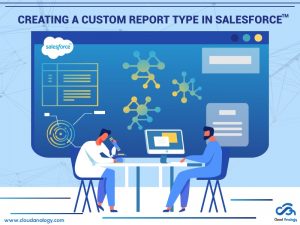Sharing is caring!
Salesforce.org is a leader in providing a flexible platform for business-centric organizations to create their own data architecture to manage operations and accounting seamlessly. But when it comes to customizing it for certain users’ requirements, this flexible platform has its own limitations. While Salesforce is one of the most robust cloud-based platforms, user experience with a native APEX page could be a bit complicated. This is where Skuid comes into the picture.
In this blog, we will explore one of the latest presentation tools, i.e, Skuid, which can help your business shorten development time and ultimately improve your employees’ Salesforce user experience.
What is Skuid?
Skuid is a cloud-based, user-experience platform to quickly create and optimize engaging business applications across data repositories and services.
Skuid in Salesforce provides a more powerful way to display lists in a variety of ways, including responsive tables, cards, and queues that can include custom filters, buttons, images. You can also augment Skuid components with many other elements of the user interface such as sorting, inline editing, conditional rendering, and more.
Benefits of Skuid in Salesforce
- Deliver a user experience customized to your unique code-free sales process.
- Build special applications that function for other unique processes in marketing, operations, engineering, human resources, or finance – without writing a single line of code.
- Brand your application based on your company’s design standards without code.
- Assemble a custom, branded portal, without code.
- Create your own navigation for your company and customers, without code.
- Design your application and portal according to your requirements or Lightning standards and then deploy multiple design themes to different groups of users.
- Represent each component conditionally.
- Use tightly integrated Lightning Components and Skuid components.
The Skuid drag-and-drop app composer is where all the Skuid pages reside together. Use the App Composer to develop simple, streamlined processes that ensure users spend less time working on manual activities, and more time adding value to the business.
With Skuid’s drag-and-drop app composer, anyone (including non-developers) can create powerful applications with beautiful and interactive user interfaces for each device. You can quickly iterate your solutions with Skuid in hours, not weeks or months. This is simply because you don’t need to write code for business logic or UI in Skuid. Moreover, it is also open and extensible for developers who want to create their own unique extensions.
Working with Skuid
To build a business application using Skuid, you need to follow these four steps:
- Connect to data
- Compose pages
- Deploy pages to the appropriate users
- Connect
You need to configure a Skuid data source to connect to the data and determine how the data source will authenticate with end-users for accessing data with Skuid.
Deploying pages in Skuid means making them available to the end-users. This can be done by users across your organization by creating apps and routes in Skuid.
Types of Skuid Components
1. Layout components
These components help you edit the structure and user interface of your pages. In this section, you ensure that your site looks and feels like an integral part of it. This layout component allows you to interact with the data in your model.
2. Data components
These components control the data available for your page and allow you to edit and update your data. With this function, you can add data to the page according to the requirements of the page or application that contains the fields that you use on this page. For example – form, upload files, tables, and images.
3. Advanced components
These components utilize advanced features, such as including other Skuid pages.
4. Visualizations Components
These components show your data in charts, graphs, and maps. This provides a better view of data that is easily understood.
Model in Skuid
The model determines what data will be pulled to one page with each model being based on a single object. The property defines several basic behaviors for the model. Actions in the model allow you to specify actions to be taken when certain events are triggered by the model. Actions are extensions of the action framework.
Regardless of whether you use Salesforce Lightning or Classic, Skuid reduces friction in implementing and developing custom applications and allows you to innovate quickly and without any limitations. The user can integrate directly into unlimited custom and standard objects, cross-object data sharing, and interactions.
Conclusion
In a nutshell, Skuid is highly configurable, giving you the flexibility to build dynamic, flexible, data-rich experiences in a fraction of the time, as compared to custom coding. With Skuid you have full control over all the functionalities of your applications, portals, and websites.
You can easily create dynamic experiences with Skuid that reflect the behavior of your users. Furthermore, you can also maintain a consistent brand image with a special theme to match your colors, fonts, headers, and footers.
Have any questions related to Skuid in Salesforce? Contact one of the world’s leading Salesforce development companies and Salesforce Implementation Partners by choosing Cloud Analogy.

Akshay Dhiman
Chief Technical Officer
Akshay Dhiman, the CTO of Cloud Analogy, has been a standout and successful Salesforce Platform Developer for years. He has a rich experience in Salesforce Integration, JavaScript, APEX, VisualForce, Force.com Sites, Batch Processing, Lightning, PHP, C++, Java, NodeJs, ReactJs, Angular 8, GraphQL, React Native, Web Technology, and jQuery.Hire the best Salesforce Development Company. Choose certified Salesforce Developers from Cloud Analogy now.







